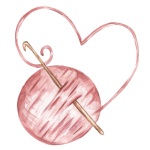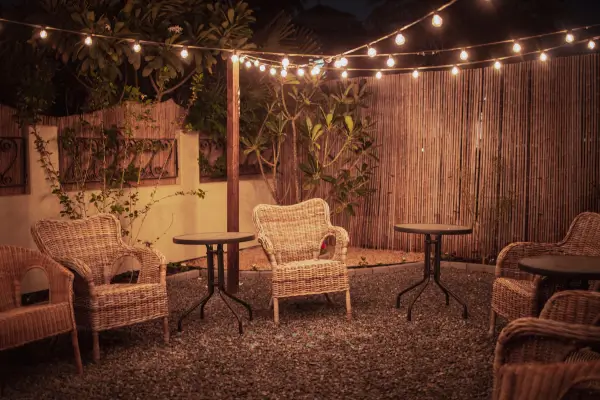Exploring the world of patchwork opens up endless creative possibilities for beginners. This timeless craft combines fabric scraps into beautiful, functional designs.
Patchwork is perfect for quilts, cushions, and decor, offering a mix of creativity and sustainability. With simple tools and techniques, anyone can start crafting unique pieces.
From choosing fabrics to sewing your first design, this guide will help you master the basics. Let’s dive into the art of patchwork together.
Start today and turn fabric scraps into stunning handmade treasures!
Why Start Patchwork?
Patchwork is an exciting craft that combines creativity, sustainability, and skill-building. Here are a few reasons why it’s an excellent hobby for beginners:
- Easy to Learn – Basic techniques are simple to grasp.
- Great for Recycling Fabric – Use fabric scraps or repurpose old clothes.
- Customizable – Create unique designs with your favorite color schemes.
- Relaxing and Therapeutic – A rewarding craft that helps reduce stress.
- Budget-Friendly – Requires minimal tools to get started.
Essential Tools and Materials for Patchwork
Before you start your first patchwork project, it’s important to have the right tools. Here’s what you’ll need:
1. Fabric Choices
Selecting the right fabric is key to achieving a neat and polished patchwork design. Consider:
- Cotton fabrics – Best for beginners due to their stability and ease of handling.
- Linen or denim – Suitable for rustic or textured designs.
- Recycled fabric – Old shirts, dresses, or curtains can be repurposed.
2. Cutting Tools
Accurate cutting ensures precision in your patchwork. Essential tools include:
- Rotary cutter – Provides sharp, clean cuts.
- Fabric scissors – For trimming and fine cutting.
- Self-healing cutting mat – Protects surfaces and extends blade life.
3. Measuring and Marking Tools
Consistency in patchwork is crucial, so always measure accurately with:
- Quilter’s ruler – A clear, grid-marked ruler for precise measurements.
- Tailor’s chalk or fabric marker – For marking cutting lines.
4. Needles and Thread
- Universal sewing needles – Work well for cotton and blended fabrics.
- Quilting thread – Stronger than regular thread, ensuring durability.
5. Sewing Machine (Optional)
While patchwork can be done by hand, using a sewing machine speeds up the process and ensures durability.
Step-by-Step Guide to Patchwork for Beginners
Step 1: Choose a Patchwork Pattern
Beginners should start with simple patterns before attempting complex designs. Some beginner-friendly patterns include:
- Squares and Rectangles – The easiest pattern for first-time patchworkers.
- Half-Square Triangles (HSTs) – Creates dynamic and modern designs.
- Log Cabin – A classic patchwork design using strips of fabric.
Step 2: Cut Your Fabric Pieces
- Choose your fabrics and wash them to prevent shrinking.
- Use a rotary cutter and ruler to cut squares or rectangles of equal size.
- Ensure precise measurements for uniform seams.
Step 3: Arrange Your Layout
Lay out the fabric pieces on a flat surface to decide the arrangement before sewing. This helps balance colors and patterns.
Step 4: Sew the Patches Together
- Start by sewing two pieces together with a ¼-inch seam allowance.
- Press the seams open with an iron for a smooth finish.
- Continue joining rows until the entire pattern is complete.
Step 5: Finish the Patchwork Piece
- If making a quilt, sew a backing fabric and add batting.
- Stitch layers together using straight-line quilting or decorative stitches.
- Trim excess fabric and add a binding to finish the edges neatly.
Common Patchwork Mistakes and How to Avoid Them
Inconsistent Seam Allowances – Always use a ¼-inch seam allowance for even results.
Skipping Fabric Prewashing – Prewash to avoid shrinking after sewing.
Uneven Cutting – Use a rotary cutter and ruler for precise shapes.
Not Pressing Seams Properly – Ironing each seam ensures a professional finish.
Overstretching Fabric – Handle fabric gently to maintain alignment.
Fun Patchwork Project Ideas for Beginners
If you’re new to patchwork, start with small, manageable projects before attempting a full quilt. Here are a few beginner-friendly ideas:
1. Patchwork Coasters
A quick and easy project that lets you practice sewing small fabric pieces together.
2. Cushion Covers
Revamp your home decor by making patchwork pillow covers with simple square patterns.
3. Tote Bags
Combine colorful fabric pieces to create unique, eco-friendly tote bags.
4. Table Runners
A decorative table runner with a patchwork design adds charm to dining areas.
5. Wall Hangings
Frame a patchwork design for unique wall art that showcases your creativity.
Tips for Improving Your Patchwork Skills
- Practice with scrap fabric before working on final projects.
- Keep stitches even for a professional finish.
- Experiment with color contrasts to create eye-catching designs.
- Try different layouts before sewing to find the best arrangement.
- Invest in a seam ripper to fix mistakes without damaging the fabric.
Final Thoughts
Patchwork is a wonderful way to express creativity, upcycle old fabrics, and create handmade treasures. Whether you’re making home decor, fashion accessories, or quilts, learning the basics will help you build confidence and improve your sewing skills over time.
Now that you know how to get started, grab some fabric scraps and begin your patchwork journey today!



